In the dynamic realm of digital pianos, 2024 marks a pivotal year, showcasing a remarkable blend of technological innovation and evolving consumer preferences. This rapidly growing sector offers a unique array of products that not only cater to the nuanced demands of music enthusiasts but also present lucrative opportunities for savvy online retailers. The sophistication and diversity in the latest digital piano models promise an enhanced musical experience, blending the classic allure of traditional pianos with the cutting-edge features of modern technology. This evolution positions digital pianos as a compelling product line for businesses aiming to resonate with a broad and discerning customer base.
Table of Contents:
1. The digital piano landscape in 2024
2. Key selection criteria for digital pianos
3. Top digital piano models and features for 2024
1. The digital piano landscape in 2024
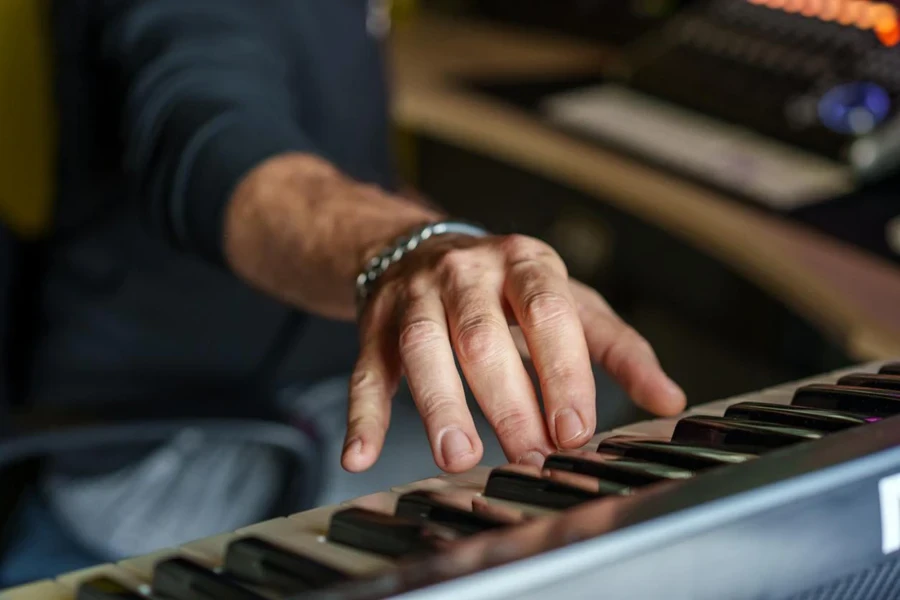
As we step into 2024, the digital piano market exhibits a promising and dynamic landscape. According to 360 Research Reports, the digital piano market, which was valued at 776 million USD in 2019, is anticipated to reach 954 million USD by 2025, marking a compound annual growth rate (CAGR) of 3.5% during 2020-2025. This growth trajectory, characterized as unexpected, underscores the rapid expansion and rising demand in this sector.
Market growth and consumer trends
The broader piano market, encompassing both acoustic and digital pianos, is projected to grow by USD 373.41 million during 2023-2028, at a CAGR of 2.77%. This expansion reflects a combination of factors including the integration of music into academic curricula, increased online sales, and the widening of distribution networks
The growth in the digital piano segment is particularly noteworthy. In 2022, the global digital piano market was valued at USD 882.42 million and is expected to grow at a CAGR of 3.31%, reaching approximately USD 1073.03 million by 2028. These figures represent a significant opportunity for online retailers and business professionals in the industry. The increase in online sales, in particular, points to a shift in consumer buying habits, favoring the convenience and accessibility of digital platforms.
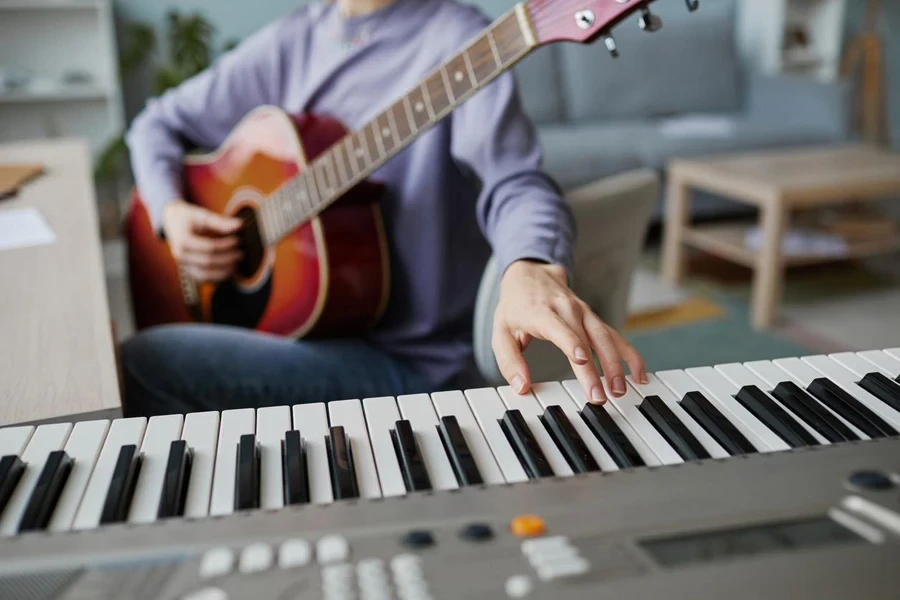
Technological advancements shaping the industry
The digital piano market is not just growing in size; it is also evolving technologically. Advances in digital sound technology, key action mechanics, and design aesthetics are continuously enhancing the quality and appeal of digital pianos. These advancements are not only making digital pianos more comparable to their acoustic counterparts in terms of sound and feel but are also integrating modern features like Bluetooth connectivity, sophisticated learning software, and more interactive user interfaces.
This evolution in technology is not just about improving the musical experience; it’s also about expanding the market to new consumer segments. For instance, the inclusion of features like headphone jacks and silent practice modes makes digital pianos more appealing to urban dwellers and families with small living spaces. Additionally, the integration of educational tools and apps in digital pianos is making them more attractive to beginners and students, further broadening the market base.
In conclusion, the digital piano market in 2024 presents a landscape rich with opportunities for growth and innovation. The combination of market expansion, evolving consumer trends, and technological advancements creates a fertile ground for online retailers and businesses in the industry to thrive.
2. Key selection criteria for digital pianos
Navigating the digital piano market requires a keen understanding of several critical factors that influence both the performance of the instruments and consumer preferences.

Understanding sound 1uality and authenticity
The heart of a digital piano lies in its ability to authentically replicate the sound of an acoustic piano. This is achieved through advanced sampling techniques where each note of an acoustic piano is recorded at various volumes using high-fidelity microphones. The variation in sound depends on numerous factors including the model of the acoustic piano used for sampling, the recording environment, and the technology employed in capturing and reproducing the sound. As Piano Dreamers suggests, the quality and length of these samples, and the technology used to process them, are vital in determining the realism of the digital piano’s sound. High-end models tend to offer more detailed and nuanced sound reproduction, closely mimicking the dynamic range of acoustic pianos.
Evaluating key action and touch response
Another pivotal aspect is the key action and touch response. Digital pianos strive to mimic the mechanical feel of acoustic piano keys, which is critical for expressive playing. The best instruments simulate this feel using actual wooden keys and advanced key mechanisms. Lower-priced models often use various designs with metal and plastic components to achieve a similar effect. The touch response should enable pianists to control the dynamics and expression of their playing, closely resembling the experience of an acoustic piano. This factor is especially crucial for advanced players and those transitioning from acoustic to digital pianos.
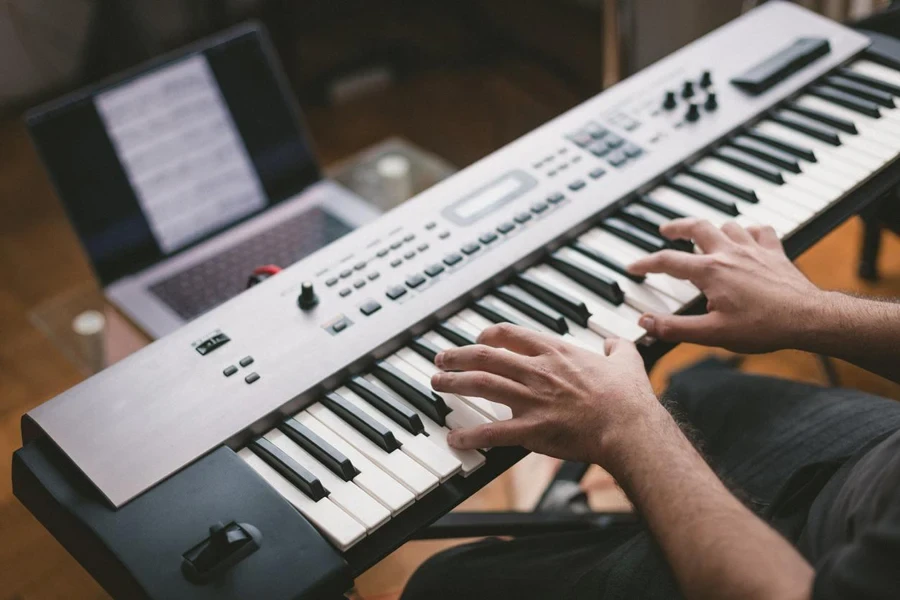
Importance of design and portability
Design and portability are increasingly important in the digital piano market. Consumers seek instruments that blend seamlessly into their living spaces or are easy to transport. Forsyths mention options like slim-line versions of classic pianos and portable stage pianos, which cater to different spatial and aesthetic needs. For instance, slim-line pianos are suitable for smaller spaces, while portable models are ideal for musicians who frequently move their instruments. The design also extends to the type of digital piano, whether it resembles a traditional upright, grand, or a more modern aesthetic.
Integrating advanced features: Bluetooth, apps, and more
The incorporation of advanced features such as Bluetooth connectivity, learning software, and interactive apps is transforming the digital piano experience. According to Digital Piano Expert, brands are now integrating Bluetooth technology, allowing pianos to connect with various devices for an enriched playing experience. This also includes apps for controlling piano functions or assisting in learning, making digital pianos more user-friendly and versatile. These features not only enhance the playability of the instruments but also make them appealing to a broader range of users, from beginners to tech-savvy musicians.
3. Top digital piano models and features for 2024
The digital piano market in 2024 offers an impressive range of models, each tailored to different user preferences and needs.
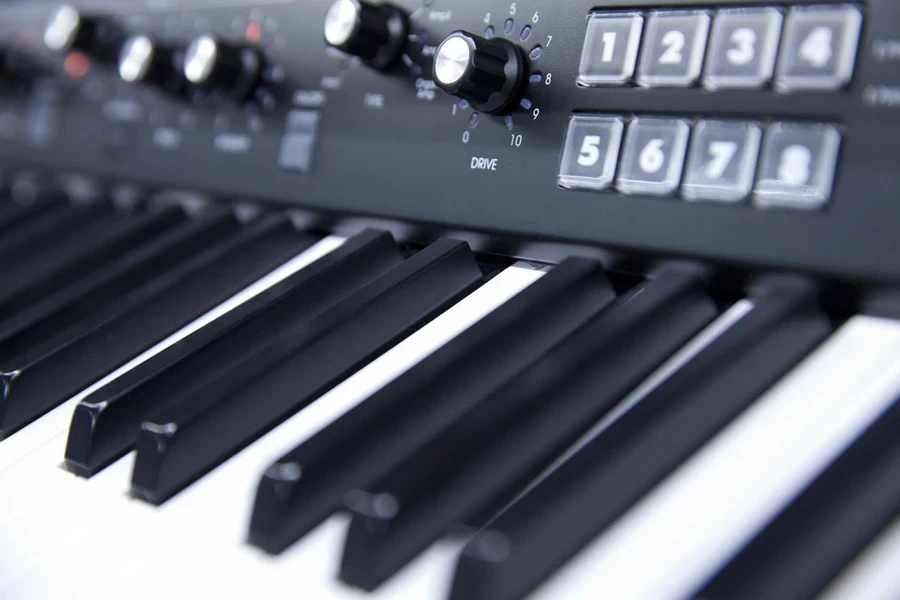
Spotlight on high-end Models: performance and luxury
In the realm of high-end digital pianos, brands like Yamaha, Kawai, and Roland continue to push the envelope in terms of performance and luxury. These models, as per Digital Piano Expert, are not just musical instruments but also statement pieces, often featuring sophisticated design elements, top-tier sound quality, and advanced key actions. For instance, Yamaha’s Clavinova series and Kawai’s CA series embody a blend of aesthetic elegance and musical excellence, offering features like real wooden keys, intricate sound sampling, and powerful amplification systems. Roland’s LX series, known for its innovative sound engines, also stands out in this segment.
Best value for money: Mid-range and entry-level choices
For those seeking quality without the hefty price tag, the mid-range and entry-level digital pianos provide exceptional value. Casio’s PX-S series, as highlighted by Digital Piano Expert, is a notable example, offering natural piano sound quality at a more accessible price point. These models often include features like Bluetooth connectivity and versatile sound options, making them ideal for both beginners and seasoned players. Yamaha’s Arius series and Kawai’s ES series also offer excellent performance at a moderate price, making them popular choices among a wide range of users.
Emerging brands and innovations to watch
Emerging brands and innovations are also shaping the digital piano landscape. Brands like Dexibell and Korg, although less known, are gaining traction with their unique offerings. Dexibell’s focus on high-quality sound and innovative designs, as per Digital Piano Expert, positions them as a brand to watch. Korg’s digital pianos, known for their robust speaker systems and elegant designs, are also gaining popularity. These emerging brands are often at the forefront of integrating new technologies and features, offering fresh alternatives to the traditional giants in the industry.
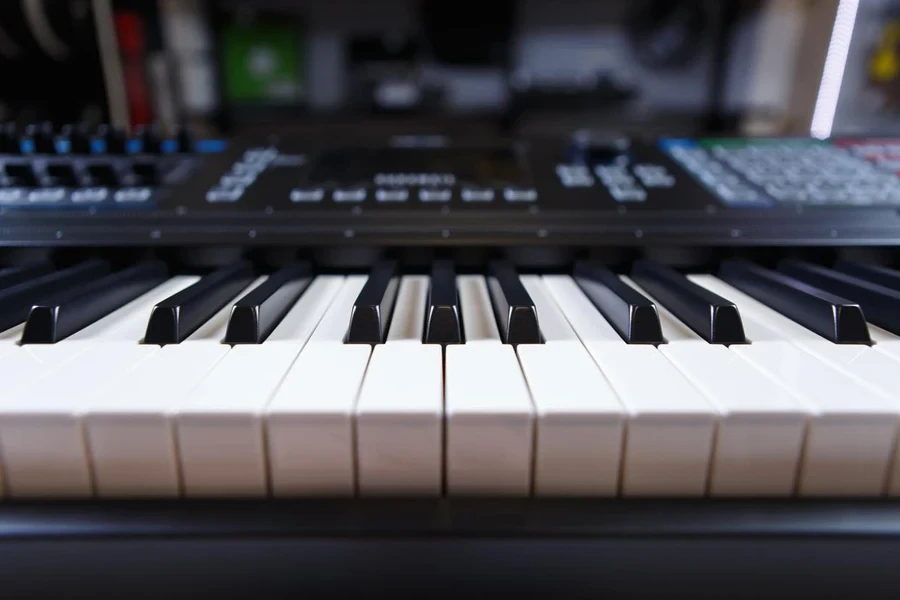
Conclusion
The digital piano market in 2024 presents a diverse and exciting landscape for online retailers. From the luxurious high-end models that cater to the most discerning of musicians to the value-packed mid-range and entry-level options, there is something for every segment of the market. Additionally, the rise of emerging brands introduces fresh dynamics and choices, further enriching the market. As technology continues to evolve and consumer preferences shift, the digital piano industry stands poised for continued growth and innovation, offering ample opportunities for retailers looking to capitalize on this trend.








